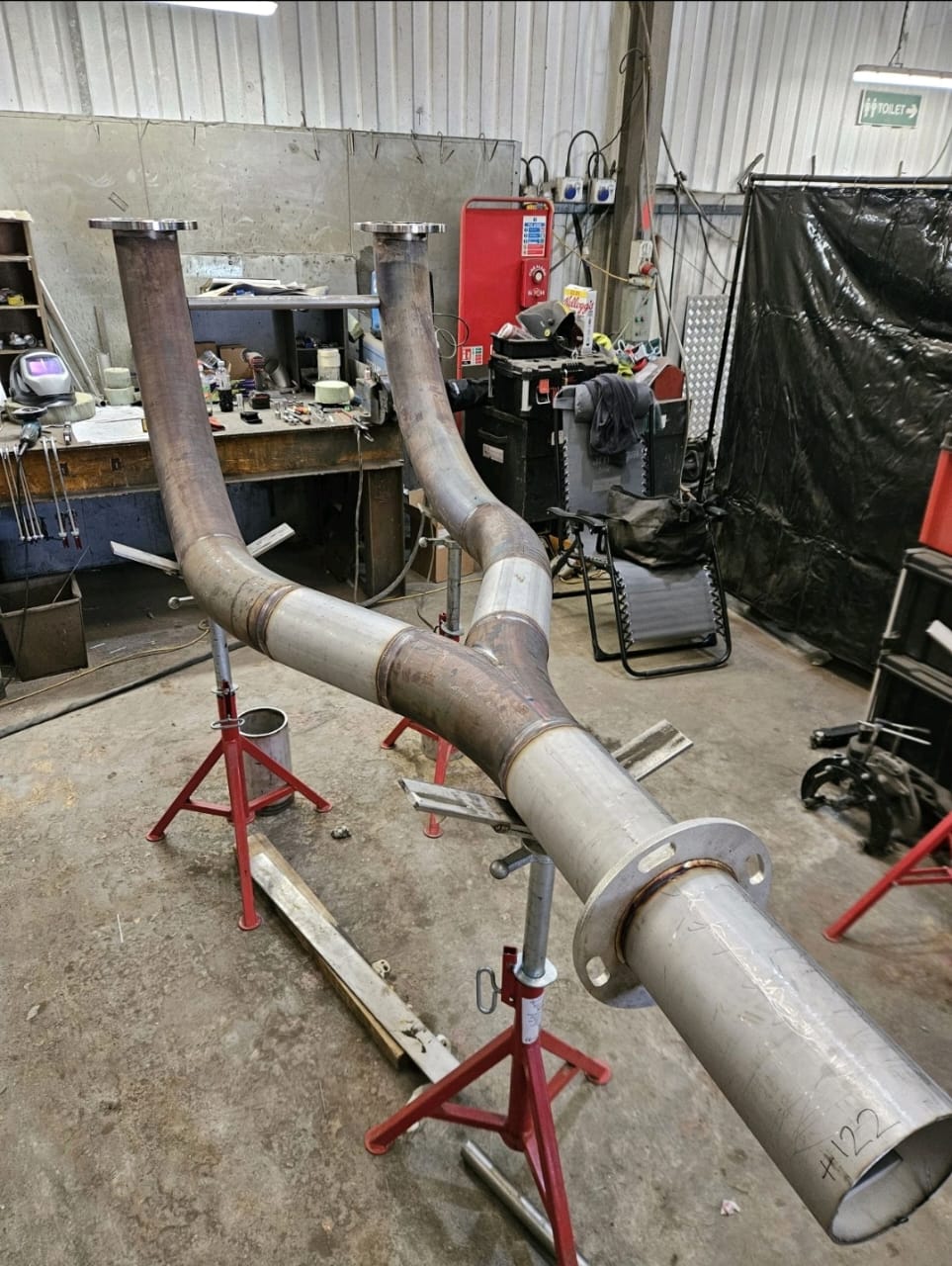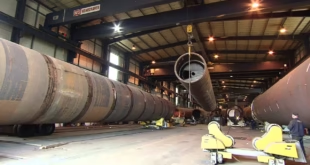Pipe Spooling and Fabrication
Introduction
Brief Overview of Pipe Spooling and Fabrication
Pipe spooling and fabrication are critical processes in the construction and maintenance of piping systems used across various industries. Pipe spooling refers to the pre-fabrication of piping components in a controlled environment before they are transported to the final installation site. This process involves cutting pipes to specified lengths, welding components together, and attaching necessary fittings and supports to create pipe spools.
Fabrication, on the other hand, encompasses a broader scope that includes the creation of individual pipe components as well as the assembly of these components into functional sections of piping systems. Fabrication processes include cutting, bending, welding, and assembling pipes and fittings to meet precise specifications. Both pipe spooling and fabrication require a high degree of accuracy and precision to ensure the integrity and functionality of the piping system.

Importance in Various Industries
Pipe spooling and fabrication play a vital role in several key industries, including oil and gas, construction, and manufacturing.
- Oil and Gas: In the oil and gas industry, complex piping systems are essential for the transportation of fluids and gases. The reliability and safety of these systems are paramount, making precise fabrication and spooling processes crucial. Pre-fabricated pipe spools help in reducing on-site welding and assembly, thus minimizing the risks and enhancing project efficiency.
- Construction: In construction, especially in large infrastructure projects like bridges, skyscrapers, and industrial plants, accurate and timely pipe fabrication ensures that all components fit perfectly and function as intended. Pre-fabricated pipe spools can significantly reduce installation time and labor costs on-site, leading to faster project completion.
- Manufacturing: Manufacturing facilities rely heavily on piping systems for various processes, including the transportation of raw materials and finished products. High-quality fabrication and spooling ensure that these systems operate efficiently and safely, minimizing downtime and maintenance costs
Understanding Pipe Spooling
Definition and Explanation of Pipe Spooling
Pipe spooling is a process where sections of piping are pre-fabricated in a controlled environment, assembled into spools, and then transported to the installation site. These spools are typically composed of lengths of pipe, fittings, and flanges that are welded or connected together according to detailed specifications and design drawings. The purpose of pipe spooling is to create modular sections of a piping system that can be quickly and efficiently assembled on-site, reducing the amount of work that needs to be performed in less controlled and often more challenging field conditions.
In a typical pipe spooling operation, the design and layout are first created using advanced software tools like CAD (Computer-Aided Design) or BIM (Building Information Modeling). This design ensures that each spool fits perfectly within the overall piping system. The fabrication process involves cutting pipes to the required lengths, welding them to fittings and flanges, and performing quality checks to ensure they meet the necessary standards.
- Design and Planning: Detailed blueprints and 3D models are created to ensure each spool meets the exact requirements. This stage is crucial for avoiding errors and ensuring a smooth installation.
- Material Selection: Materials are chosen based on the system’s operating conditions, including temperature, pressure, and the type of fluid being transported.
- Cutting and Bevelling: Pipes are cut to precise lengths and bevelled to prepare them for welding. This step requires high precision to ensure a perfect fit.
- Assembly and Welding: The cut and bevelled pipes are then assembled and welded together. This stage is often done in a controlled environment to ensure high-quality welds.
- Inspection and Testing: Each spool undergoes rigorous testing, including non-destructive testing (NDT) methods, to ensure there are no defects and that the spool meets all required standards.
The Pipe Fabrication Process
Steps Involved in Pipe Fabrication
Pipe fabrication is a multi-step process that involves transforming raw materials into ready-to-install piping systems. The primary steps include design and planning, material selection, cutting and welding, and assembly and inspection. Each step requires careful attention to detail to ensure the final product meets the required specifications and standards.
Design and Planning
The first step in the pipe fabrication process is meticulous design and planning. This involves creating detailed drawings and specifications for the piping system using advanced design software like CAD (Computer-Aided Design) or BIM (Building Information Modeling). These designs must consider factors such as pipe size, material, pressure ratings, and environmental conditions. Accurate design is crucial for ensuring that the fabricated components fit together correctly and function as intended.
Planning also includes determining the sequence of fabrication activities, estimating the time and resources needed, and identifying potential challenges that could arise during the fabrication process. Proper planning helps in coordinating various activities, minimizing delays, and ensuring efficient use of resources.
Material Selection
Choosing the right materials is essential for the success of any pipe fabrication project. The selection process depends on several factors, including the type of fluid or gas being transported, operating temperatures and pressures, and environmental conditions. Common materials used in pipe fabrication include carbon steel, stainless steel, and various alloys.
Material selection must also consider industry standards and regulations, such as those set by the American Society of Mechanical Engineers (ASME) or the American Society for Testing and Materials (ASTM). Using high-quality materials that meet these standards ensures the durability and reliability of the piping system.
Cutting and Welding
Once the design is finalized and materials are selected, the next step is cutting and welding the pipes and fittings. Cutting involves shaping the pipes to the required lengths and angles using various tools such as saws, torches, and automated cutting machines. Precision in cutting is vital to ensure that the pieces fit together correctly.
Welding is the process of joining the cut pieces together. Different welding techniques, such as arc welding, TIG (Tungsten Inert Gas) welding, and MIG (Metal Inert Gas) welding, are used depending on the material and specifications. Skilled welders must perform these tasks to ensure strong, leak-proof joints.
Assembly and Inspection
After cutting and welding, the individual components are assembled into complete piping systems or spools. This step involves fitting the pipes, flanges, valves, and other components together according to the design specifications. Proper alignment and secure connections are essential for the system’s functionality.
Key Techniques in Pipe Spooling
Detailed Planning and Design Considerations
Effective pipe spooling begins with meticulous planning and design. Detailed planning involves creating comprehensive drawings and specifications that outline every aspect of the pipe spools, including dimensions, materials, connection types, and installation sequences. These plans should account for the entire lifecycle of the piping system, from fabrication through to maintenance.
Key considerations in planning and design include:
- System Requirements: Understanding the operational requirements, such as pressure, temperature, and the type of fluid or gas being transported.
- Space Constraints: Ensuring that the spools will fit within the available space at the installation site without interfering with other systems or structures.
- Accessibility: Designing spools in a way that facilitates easy access for installation, maintenance, and inspection.
- Standards and Regulations: Adhering to industry standards and regulations, such as those set by ASME and ASTM, to ensure safety and compliance.
- Flexibility: Incorporating flexibility in the design to allow for adjustments during installation if unforeseen challenges arise.
Utilizing Software for Spooling Accuracy (CAD, BIM)
Advanced software tools are integral to achieving precision in pipe spooling. Computer-Aided Design (CAD) and Building Information Modeling (BIM) software provide powerful platforms for creating detailed and accurate models of piping systems. These tools help in visualizing the spools in the context of the entire system, identifying potential issues early in the design phase, and ensuring precise alignment and fit.
Benefits of using CAD and BIM in pipe spooling include:
- Accuracy: High precision in dimensions and geometry, reducing the risk of errors during fabrication and installation.
- Collaboration: Enhanced collaboration among different stakeholders (engineers, fabricators, contractors) through shared models and data.
- Clash Detection: Early identification of clashes and interferences with other systems or structures, allowing for adjustments before fabrication.
- Documentation: Comprehensive documentation and records that support quality control, traceability, and future maintenance.
Quality Control in Pipe Spooling and Fabrication
Importance of Adhering to Industry Standards (ASME, ASTM)
Adhering to industry standards is paramount in pipe spooling and fabrication to ensure the safety, reliability, and performance of piping systems. Organizations such as the American Society of Mechanical Engineers (ASME) and the American Society for Testing and Materials (ASTM) set rigorous standards that dictate the specifications, materials, design, fabrication, and testing of piping components.
ASME Standards:
- ASME B31.3: Covers process piping, including design, materials, fabrication, assembly, inspection, and testing.
- ASME Section IX: Focuses on welding and brazing qualifications, ensuring that welding procedures and personnel meet stringent quality requirements.
ASTM Standards:
- ASTM A106: Specifies the requirements for seamless carbon steel pipe for high-temperature service.
- ASTM A312: Covers seamless, welded, and heavily cold worked austenitic stainless steel pipes.
FAQs
What is the main difference between pipe spooling and pipe fabrication?
The main difference lies in the scope: pipe spooling involves creating smaller, prefabricated sections, while pipe fabrication involves building the entire piping system from scratch.
How does material choice affect the pipe spooling process?
Material choice affects the durability, corrosion resistance, and overall performance of the spooled sections. Different materials are selected based on the system’s operating conditions and requirements.
What are the common challenges in pipe fabrication?
Common challenges include ensuring precise measurements, maintaining high-quality welds, and meeting tight deadlines. Overcoming these challenges requires meticulous planning and strict quality control.
How has technology improved the pipe spooling process?
Technology has introduced advanced tools like 3D modeling software and automated welding systems, improving precision, reducing production times, and lowering costs.
Why is quality control crucial in pipe spooling and fabrication?
Quality control ensures that the finished product is safe, reliable, and meets all regulatory standards. It helps prevent defects and ensures the piping system operates efficiently and without leaks.
Conclusion
Pipe spooling and fabrication are crucial processes in the industrial piping industry. Each has its own set of procedures, tools, and challenges. Understanding the differences and the specific applications of each can help ensure that piping systems are built efficiently and to the highest quality standards. As technology continues to advance, both spooling and fabrication are becoming more efficient and precise, paving the way for even more innovative solutions in the future.
 Welding of Welders All about Welding and Welders
Welding of Welders All about Welding and Welders



